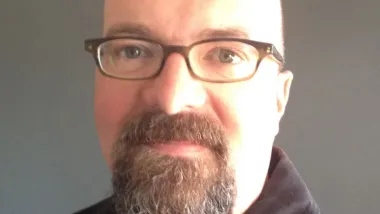In August of 2006, an unknown Irish company called Steorn took out a full-page ad in The Economist to announce that they had created a magnetic technology that produced more energy than it used- essentially, a perpetual motion machine, the Holy Grail of energy.
In August of 2006, an unknown Irish company called Steorn took out a full-page ad in The Economist to announce that they had created a magnetic technology that produced more energy than it used- essentially, a perpetual motion machine, the Holy Grail of energy.
As Steorn CEO Sean McCarthy put it in an interview, "What we have developed is a way to construct magnetic fields so that when you travel round the magnetic fields, starting and stopping at the same position, you have gained energy." If this is true, Steorn has found a way to break the First Law of Thermodynamics and could be the saviors of our energy-starved world, reducing global warming in the process. As Richard Walshe, their Marketing Manager puts it in this video, "Think of the amount of things you did today that involved electricity or energy in some way."
The problem is that so far Steorn hasn't successfully demonstrated the technology. After much secretive behavior and invitations to scientists the world over, the first public display at the Kinetica Museum in London hit "technical problems" and was hastily closed. Steorn's last press release is from October of 2007, and says nothing about their progress.
Science fans across the internet have debated what must be going on behind-the-scenes and the validity of Steorn's claims. People have posed theories that Steorn is a viral marketing company, and that this is an elaborate hoax to show off their skills. The most likely observation to my mind was posted by a blogger who essentially said that it is very easy in experiments such as this to undercount the amount of energy you are feeding into the system. Steorn's endless energy may actually need endless energy to keep it going.
Steorn is one of the more outrageous examples of the input vs. output problem that plagues so much of the discussion today around alternative energy sources. Hydrogen is still being touted as the next great way to power our cars, but hydrogen is an energy carrier, not an energy source. It takes energy to break down and store hydrogen, which must be created using another power source such as conventional (or renewable) power plants. In order to produce enough ethanol to power all the cars in the United States, you'd need to grow corn on every acre of arable land in the country and then some. Scientists are bringing us fascinating ideas like creating diesel fuel with bacteria, but forget to mention that the bacteria feeds on sugar cane. How much sugar cane will it take to run our world?
As James Howard Kunstler put it in an article in Orion Magazine, "Perhaps the leading delusion is the notion that energy and technology are one and the same thing, interchangeable. The popular idea, expressed incessantly in the news media, is that if you run out of energy, you just go out and find some 'new technology' to keep things running." While I hesitate to lose my faith completely in American ingenuity, I do believe it unlikely that we're going to find a new great source of energy. Science already understands the sources we've got at hand- oil, coal, nuclear, sunlight, wind, hydroelectric, geothermal. It's time to approach our energy future rationally with these sources in mind, and fit our lifestyles to the realities they present.

Planetizen Federal Action Tracker
A weekly monitor of how Trump’s orders and actions are impacting planners and planning in America.

Chicago’s Ghost Rails
Just beneath the surface of the modern city lie the remnants of its expansive early 20th-century streetcar system.

Amtrak Cutting Jobs, Funding to High-Speed Rail
The agency plans to cut 10 percent of its workforce and has confirmed it will not fund new high-speed rail projects.

Ohio Forces Data Centers to Prepay for Power
Utilities are calling on states to hold data center operators responsible for new energy demands to prevent leaving consumers on the hook for their bills.

MARTA CEO Steps Down Amid Citizenship Concerns
MARTA’s board announced Thursday that its chief, who is from Canada, is resigning due to questions about his immigration status.

Silicon Valley ‘Bike Superhighway’ Awarded $14M State Grant
A Caltrans grant brings the 10-mile Central Bikeway project connecting Santa Clara and East San Jose closer to fruition.
Urban Design for Planners 1: Software Tools
This six-course series explores essential urban design concepts using open source software and equips planners with the tools they need to participate fully in the urban design process.
Planning for Universal Design
Learn the tools for implementing Universal Design in planning regulations.
Caltrans
City of Fort Worth
Mpact (founded as Rail~Volution)
City of Camden Redevelopment Agency
City of Astoria
City of Portland
City of Laramie




























